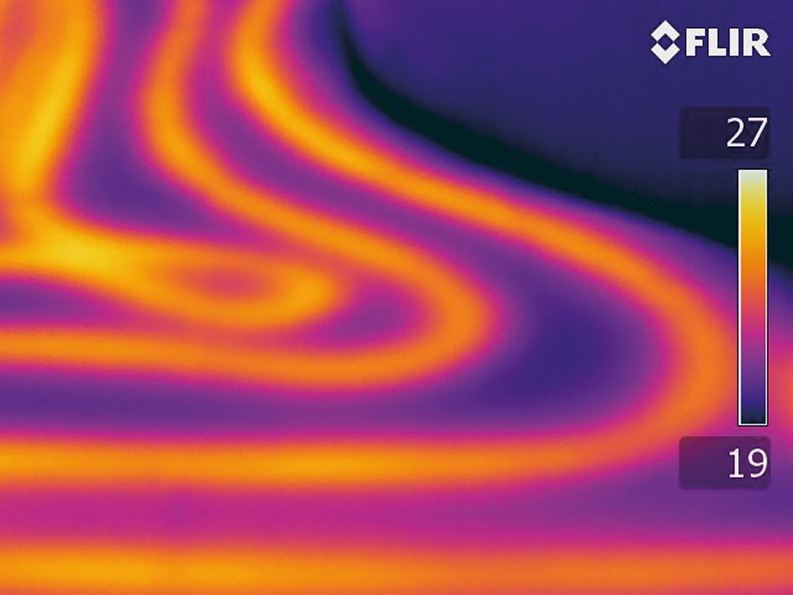In a radiant flooring system, heat is provided by hot-water tubes or electric wires installed below the floor. As invisible thermal radiation rises it warms flooring material, which radiates this captured heat in turn. In new buildings with solid floors, the heating pipe is normally embedded in the floor screed.
Valerio Di Stefano, an Italian specialist in energy management and thermography, recently purchased a FLIR E8 thermal imaging camera to carry out energy audits in buildings. He says: “Sometimes a system that is apparently running properly will have hidden defects.
“There can be problems with the way the screed flooring was laid, how the pipes were laid, or problems with optimising energy transport, all of which can be quickly detected by thermal imaging. Normally, without a thermal imaging camera, you would have to look at the pumps and deduce what is going on below the floor. But with a thermal imaging camera, you have an immediate overview of the entire floor heating system.”
For example, thermography clearly show if a manifold that feeds a radiant heating system with circulator pumps for each manifold section is the same temperature on both sides. Poorly laid wiring or tubing can also be exposed as in the accompanying image, which shows where wires are too close together. Thermography highlights colder or uneven flooring areas for further investigation, since it may mean that there are changes in the thickness of the screed or in the adhesive used.
There is some debate about whether or not to place underground heating under fixed furniture. The argument against is that the heat rising from the floor can cause kitchen units to collect condensation. Heating under units can also heat the units themselves and whatever is stored within, including food supplies.
However, the presence of heat beneath furniture or other obstacles increases the inertia of the heating system both during startup and shutdown and makes it difficult to control room temperature. Thermal imaging helps check pipes and tubes for leaks, even when the water pipes are laid in the floor or under plaster. The heat of the pipes radiates through the surface and the pattern can be easily detected with a thermal imaging camera.
For further information, please visit PASS Ltd’s specialist Thermal Imaging web page at Tester.co.uk
.



